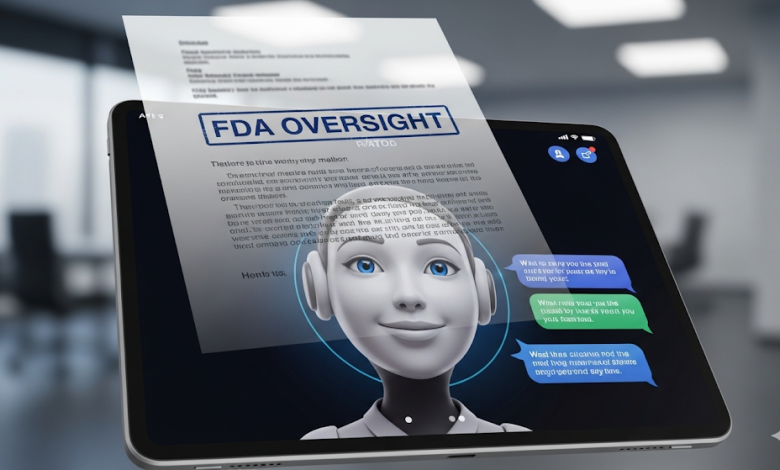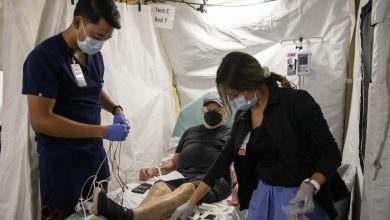FDA’s Next Target: Mental Health Chatbots Facing Tighter Oversight

Technology Meets Mental Health Care
In recent years, mental health chatbots have surged in popularity. From offering guided meditation to providing cognitive behavioral therapy (CBT)-inspired conversations, these digital companions promise accessible, low-cost support for millions struggling with anxiety, depression, or stress.
But with popularity comes scrutiny. The U.S. Food and Drug Administration (FDA)—known for regulating drugs, medical devices, and now increasingly digital health technologies—has signaled that mental health chatbots may soon face tighter oversight.
This move sparks crucial questions:
- Are mental health chatbots medical devices?
- Can they truly replace or complement therapists?
- What risks do they pose to vulnerable users?
- And most importantly, how will stricter regulations reshape the future of digital mental health care?
Section 1: The Rise of Mental Health Chatbots
1.1 Why Chatbots Became Popular
- Accessibility: Millions lack access to affordable therapy. Chatbots offer 24/7 support.
- Affordability: Most apps are free or cost a fraction of traditional counseling.
- Stigma Reduction: Many people hesitant to see a therapist feel comfortable “chatting” anonymously with a bot.
- Scalability: Unlike human therapists, chatbots can serve thousands simultaneously.
1.2 Popular Examples
- Woebot – a CBT-based chatbot with clinical trial backing.
- Wysa – focuses on AI-driven emotional support.
- Replika – marketed as an “AI companion” that some use for mental well-being.
These apps highlight the growing overlap between mental health care and artificial intelligence.
Section 2: Why the FDA Is Getting Involved
2.1 Potential Risks
- Misinformation: Chatbots may provide inaccurate or harmful advice.
- Lack of Crisis Support: Unlike human therapists, bots may not recognize severe emergencies like suicidal ideation.
- Data Privacy: Sensitive health data is collected, raising concerns about breaches and misuse.
- Unproven Claims: Some apps market themselves as therapy replacements without sufficient scientific validation.
2.2 Regulatory Gaps
Until now, most mental health chatbots have operated in a gray area:
- Not classified as medical devices.
- Lightly regulated under wellness app guidelines.
- Allowed to advertise benefits with limited oversight.
The FDA’s move signals a shift toward stricter classification and enforcement.
Section 3: What Tighter Oversight Could Look Like
3.1 Classification as Medical Devices
- The FDA could label certain mental health chatbots as “software as a medical device” (SaMD).
- This means stricter testing, clinical validation, and approval before launch.
3.2 Stricter Marketing Rules
- Companies may need to provide scientific evidence to support claims like “treats anxiety” or “reduces depression.”
- Apps making exaggerated promises could face penalties.
3.3 Data Privacy Standards
- Stricter rules on user data protection may be enforced, preventing misuse by third parties.
3.4 Post-Market Surveillance
- The FDA could require companies to monitor chatbot performance after release, ensuring ongoing safety and effectiveness.
Section 4: The Industry’s Response
4.1 Concerns from Developers
- Innovation Slowdown: Extra regulatory hurdles may stifle creativity.
- Cost Barriers: Smaller startups may struggle with expensive compliance processes.
- Global Competition: Over-regulation in the U.S. could push companies to launch in less restrictive markets first.
4.2 Support for Oversight
- Some experts argue stricter oversight builds user trust.
- Responsible developers welcome regulation to weed out low-quality or exploitative apps.
Section 5: How This Affects Users
5.1 Potential Benefits
- Safer Experiences: Fewer risks of harmful or misleading chatbot responses.
- Improved Effectiveness: Only evidence-based chatbots will survive regulatory filters.
- Trust: Users gain confidence knowing their mental health tools meet strict standards.
5.2 Possible Drawbacks
- Reduced Access: Some apps may disappear if unable to meet FDA requirements.
- Higher Costs: Regulatory compliance could make apps more expensive.
- Fewer Options: The variety of available mental health chatbots may shrink.
Section 6: Case Studies – Success and Controversy
6.1 Woebot’s Clinical Validation
- Backed by clinical research showing effectiveness in reducing depressive symptoms.
- This positions it as a model for what the FDA might consider a responsible, evidence-based app.
6.2 Replika’s Controversies
- Initially marketed as an “AI friend,” some users reported emotional dependence or even inappropriate interactions.
- Highlights the risk of unregulated mental health claims.
6.3 Wysa’s Balanced Approach
- Offers CBT-inspired support while clarifying it’s not a replacement for therapy.
- Example of transparent marketing that could withstand FDA scrutiny.
Section 7: The Global Perspective
The U.S. isn’t alone in grappling with chatbot regulation.
- European Union: The upcoming AI Act will classify certain mental health chatbots as “high-risk” AI, demanding strict compliance.
- UK: National Health Service (NHS) cautiously integrates AI apps but with rigorous vetting.
- Asia: Countries like India and Singapore see booming chatbot usage but limited regulation—raising questions about safety.
The FDA’s stance could set a global precedent, influencing other regulators.
Section 8: The Ethical Debate
8.1 Can AI Replace Therapists?
- Advocates: Chatbots offer affordable, scalable support.
- Critics: Human empathy, nuance, and crisis management can’t be replicated.
8.2 The Risk of Overreliance
- Some worry users may delay seeking real therapy by relying solely on bots.
8.3 AI Bias and Mental Health
- If training data is biased, chatbots may respond insensitively to cultural, gender, or identity-specific concerns.
Section 9: Expert Opinions
- Psychologists: Many welcome chatbots as supplementary tools, but stress they can’t replace therapy.
- Tech Experts: Emphasize the need for transparent algorithms and bias testing.
- Policy Makers: Support regulation to balance innovation with public safety.
Section 10: What the Future Holds
10.1 Integration with Healthcare Systems
- Regulated, validated chatbots may one day be prescribed by doctors as part of treatment plans.
10.2 Hybrid Care Models
- Future therapy may blend human therapists + AI assistants, offering a mix of empathy and efficiency.
10.3 AI Advancements
- With improvements in natural language processing, future chatbots may provide more human-like, empathetic responses—but still require oversight.
Conclusion: The Balancing Act Ahead
The FDA’s plan to tighten oversight on mental health chatbots marks a turning point in digital health regulation. On one hand, it promises safer, more reliable AI companions for millions seeking help. On the other, it risks slowing innovation and limiting accessibility.
At the heart of the debate is a critical question: Should mental health be entrusted to machines, and if so, under what safeguards?
For now, the future seems to lie in balance—where regulation ensures safety, but innovation continues to thrive. As the FDA sharpens its focus, one thing is clear: the next chapter of mental health care will be shaped not just in therapy rooms, but in algorithms, policies, and digital conversations.




